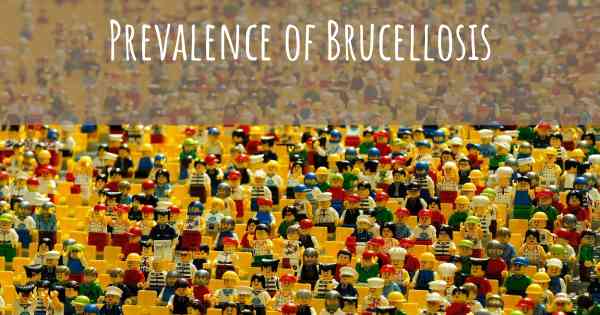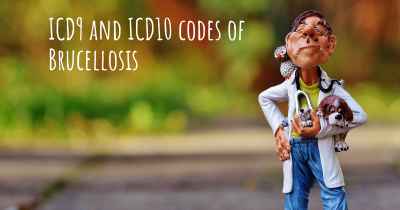What is the prevalence of Brucellosis?
How many people does Brucellosis affect? Does it have the same prevalence in men and women? And in the different countries?

Brucellosis is a zoonotic infectious disease caused by bacteria of the genus Brucella. It affects various animals, including livestock and wildlife, and can be transmitted to humans through direct contact with infected animals or consumption of contaminated animal products. The prevalence of Brucellosis varies across regions and depends on factors such as livestock management practices and public health measures. It is considered endemic in many parts of the world, particularly in developing countries with limited resources for disease control. Efforts to control and prevent Brucellosis are crucial to reduce its impact on both animal and human health.
Brucellosis is a zoonotic infectious disease caused by bacteria of the genus Brucella. It primarily affects animals, particularly livestock such as cattle, goats, and sheep, but can also be transmitted to humans through direct contact with infected animals or consumption of contaminated animal products.
The prevalence of Brucellosis varies across different regions and is influenced by various factors including animal husbandry practices, vaccination programs, and public health measures. In some parts of the world, Brucellosis is endemic, meaning it is consistently present at a relatively high level. These regions include parts of the Mediterranean basin, the Middle East, Central Asia, and parts of Africa and South America.
Estimating the exact prevalence of Brucellosis is challenging due to underreporting and misdiagnosis, as symptoms can be nonspecific and similar to other febrile illnesses. However, it is estimated that hundreds of thousands of new human cases occur annually worldwide.
Brucellosis poses a significant public health concern as it can cause a range of symptoms in humans, including fever, fatigue, joint pain, and in severe cases, organ damage. It can also lead to long-term complications if not properly treated.
Efforts to control Brucellosis involve a combination of measures such as animal vaccination, surveillance, and public awareness campaigns. Additionally, strict food safety practices and proper handling of animal products are crucial in reducing the risk of transmission to humans.








